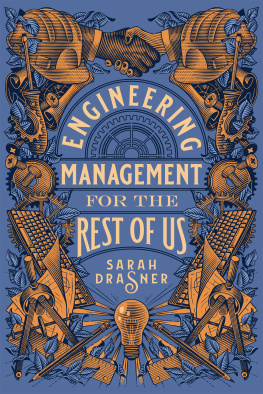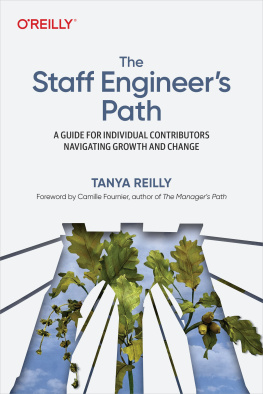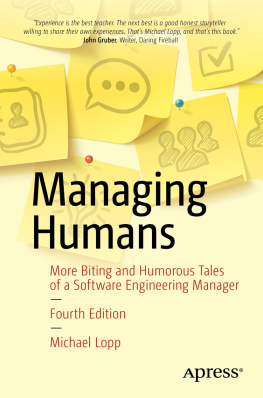A few particular thanks are in order. This book came together in the months preceding my wedding, and Im grateful to Laurel for her thoughts and partnership. Thank you to Brianna Wolfson and Tyler Thompson, without whom this book would not exist. Finally, thanks to my sister, Hope, who has long been the talented sibling, showing that the path to authorship is attainable.
1.1 Introduction
Some people go into management out of a desire to be of service. Others become managers in a cynical pact, exchanging excitement in their current role for the prospect of continued salary bumps and promotions. There are even folks who initially go into management because theyre entirely fed up with their own manager and are convinced that they could do better.
I wont say which of those, if any, describes me.
Regardless of what motivation first brings you into management, it can feel as if youve entered a troubled profession. Skilled practitioners are scarce, and only the exceptional company is willing to invest in growing its managers.
If training programs are peculiarly uncommon, concerns that todays managers are ill-prepared are not. I was lucky early in my management career to have a coworker describe me as the best leader they had worked with. It took several additional years of practice for another to declare me their worst.
While Davids cloak is increasingly suspicious draped from the shoulders of Silicon Valleys Goliaths, the vast majority of technology companies are well-meaning chrysalises that hope to one day birth a successful business, and they are guided by managers who are learning to lead, one unexpected lesson at a time. For many such people, the entry into engineering management begins with a crisis, and their training is a series of hard knocks.
This was certainly my experience: my path into management began at Digg, paved by a pair of layoffs in 2010. The three one-on-ones Id had at my previous job had not, surprisingly, culminated in a rigorous framework for management, and I had absolutely no idea what I was doing.
In the years since, Ive worked to educate myself on the topic, reading anything that seemed even distantly relevant. There are some wonderful resources out there (many of which Ive listed in the Books Ive found very useful appendix), but the rare answers I uncovered continued to be drowned out by my ever-increasing sea of questions.
It was only when I got the opportunity to work at Uber, which was growing its engineering team from 200 to 2,000 over two years, and then at Stripe, which was experiencing similar rapid growth, that I had to opportunity to truly refine my approach to management through exposure to an endless variety of challenges. There are few things peaceful about managing in rapidly growing companies, but Ive never found anywhere better to learn and to grow.
As Ive become more experienced, my appreciation for management, and engineering management in particular, has grown, and Ive come to view the field as a series of elegant, rewarding, and important puzzles. This book is a collection of those puzzles, which Ive had the good fortune to struggle with and learn from. It starts with the most important tool in my kit, Organizations. Organizational design gets the right people in the right places, empowers them to make decisions, and then holds them accountable for their results. Maintained consistently and changed sparingly, nothing else will help you scale more. Next, well review a handful of fundamental Tools of management that Ive found useful across a wide variety of scenarios. These range from systems thinking to vision documents, from metrics to migrations, from reorgs to career narratives. Perhaps the easiest way to use this chapter is to skim over the ideas quickly, and then reread them when it seems as if they might be useful.













 @lethain
@lethain

